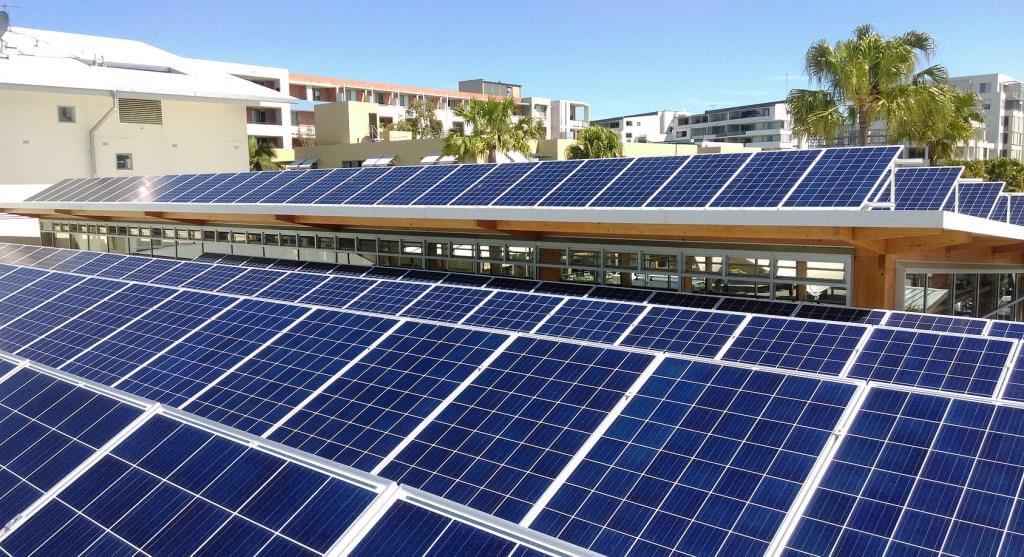
We recently spent two days with a host of operators and fellow suppliers at active-net – a health, fitness and leisure sector event for discussing the latest trends and innovations. One theme that came up again and again was our shared responsibility for improving sustainability and decarbonising efforts across the whole sector.
In this blog we’ve collected some examples of what pioneering owners and operators are doing in this space, and how Hutchi is supporting sustainability initiatives with smart technology integrations.
Five things – big and small – the leisure sector can do to improve sustainability
1 – Make sustainability a priority
This one sounds like a given, but there’s a world of difference between adding a sustainability project to someone’s list of objectives and truly making it an organisational priority.
You need to prioritise it, clearly and consistently communicate your vision, and back that up with actions. Your people need to live and breathe the goal.
Everyone Active are a great example of a leisure operator taking this approach. They created a Net Zero Strategy to decarbonise their leisure facilities by 2050 and invested in hiring a Group Sustainability Manager to help implement it.
Their plan includes retrofitting existing facilities in the leisure industry with renewable and energy efficiency systems, using low-carbon materials in new builds, transitioning to electric vehicles, and engagement campaigns to encourage behaviour change.
2 – Measure your carbon impact
As the saying goes, what gets measured gets managed. If you’re serious about driving change it’s important to put a measure in place that will make progress – or lack of it – visible to everyone.
Carbon footprint is a metric many organisations track as a key performance indicator. It measures the amount of greenhouse gas emissions that are directly and indirectly associated with the organisation. This includes emissions from activities such as transportation, energy consumption, food production, and waste disposal.
There are many carbon footprint calculators available online, and companies like PawPrint providing services to help organisations such as those in the leisure industry, with decarbonising by educating their employees on how to contribute to reducing their environmental impact.
3 – Repair and reuse instead of replace
When refreshing facilities there is typically a lot of replacing old equipment with new equipment. There’s nothing inherently wrong with that, but have you always given proper consideration to what existing equipment can be repaired or upgraded instead of replaced?
At Hutchi, when scoping a new project we start by reviewing what components from the existing space can be repurposed for the new installation, and our engineers take great pleasure in breathing fresh life into components customers assumed would need replaced.
Our digital signage project with Gymbox and Forty Eight Point One is a great example of this process. When planning a digital signage rollout across all Gymbox’s London locations we found the majority of existing screens could be reused if we developed new external drivers to adjust the screen orientation. In this case we avoided the waste and expense of new screens.
4 – Accumulated benefit of small changes
Don’t underestimate the impact of small changes. When added up across an organisation and over a long period of time, small changes to daily habits can have a significant impact on reducing your carbon footprint.
Encourage your people to notice and act upon ‘the little things’. This could be powering down devices or facility areas when not in use; recycling and reducing waste; and choosing more sustainable transport methods (or better yet, cutting out some trips altogether!).
There may also be opportunities to make small energy reducing tweaks without impacting on member experiences in the leisure sector. Better Gyms, who operate 258 council-owned gyms, lowered the air and water temperatures at their swimming pools by 1C and reported no significant complaints.
5 – Renewable energy sources and reduced consumption
The leisure sector is increasingly recognising the importance of transitioning to renewable energy sources. Installing solar panels, like at the Aylestone Leisure Centre in Leicester, can provide a renewable source of energy that reduces reliance on fossil fuels.
Embracing fitness equipment innovations like Energym’s RE:GEN exercise bike, which convert kinetic energy from exercise into usable electricity, can also help power facilities in a sustainable way.
One of the most creative ideas we’ve seen is Exmouth Leisure Centre’s partnership with a data centre start-up Deep Green. They are heating their swimming pool for free using the heat generated from a washing-machine sized data centre.
By adopting these measures and implementing other energy-efficient practices, the leisure sector can play a crucial role in reducing carbon emissions and mitigating the impact of climate change, whilst lowering running costs.
How we’re supporting sustainability
Our ‘repair before replace’ approach to new projects is one thing we do to help our clients be more sustainable but we also provide many technology integrations that can help.
Sensors and control automations allow you to automate integrations like lighting, audio and heating; optimising levels based on the number of people using the space, and turning off entirely when the space isn’t in use.
Teleconferencing facilities and interactive whiteboards can improve the quality of remote meetings and collaboration to the extent that it reduces the need for travelling between sites for face-to-face meetings.
Digital signage across public and staff areas of your venues can be used for communications nudging positive sustainability behaviours by both members and staff.
If you want to learn more about leisure sector technology integrations and how these integrations can work in different types of fitness studios, contact us.